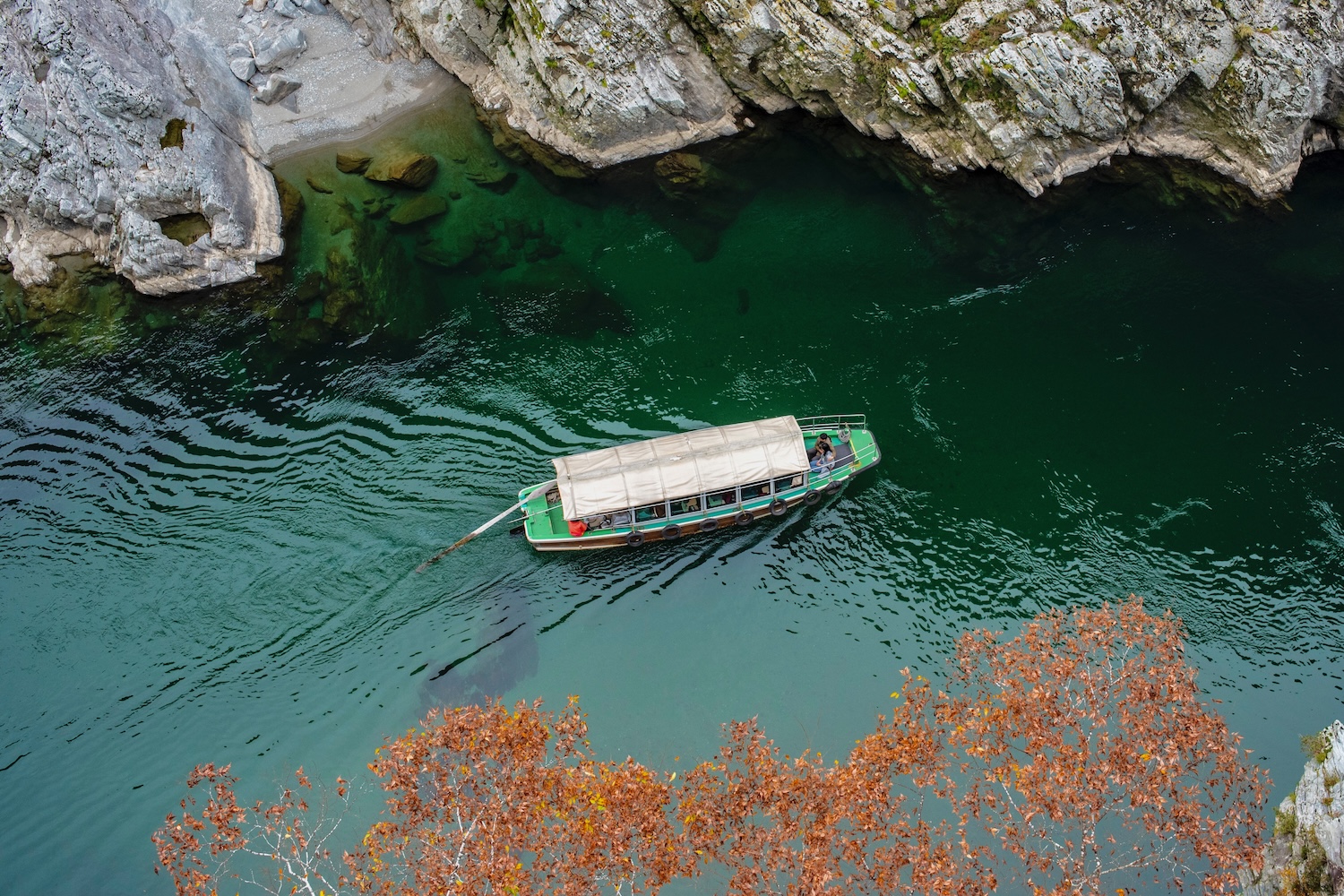The first time I visited Shikoku‘s Iya Valley, my timing was inopportune to say the least. It was early February, i.e. the coldest time of the year, and my trip was heavily stacked with outdoor activities.
The place was still beautiful—and, in spite of being dressed inappropriately, I mostly enjoyed the hikes and river cruises—but I longed to return when it was a bit warmer, to say nothing of how I wanted to see the region’s wooded hills painted in the famous colors of its autumn season.
I know from personal experience that no matter when you plan your Iya Valley itinerary, this oft-missed corner of the country will exceed your expectations. Here’s how I’d recommend proceeding, once you decide you want to go.
Where to Stay in the Iya Valley
I’ve always been relatively impressed by the quality of Iya Valley hotels, even if the quantity is not that high. When I stay overnight here, I prefer a higher-end property with a hot spring, be that the Iya Onsen Hotel, or the Hotel Kazurabashi, the latter is near the bridge of the same name. Among the benefits of these properties is that they have ample parking and don’t require you to traverse twisty roads—you’re almost certain to self-drive in the Iya Valley, but more on that in a minute.
The reality, of course, is that you might not stay overnight here. As I’ll explain in a few paragraphs, the Iya Valley sits in close proximity to the major Shikoku cities of Takamatsu and Tokushima. As a result, unless you really want to take your time exploring the Iya Valley, you can come here for the day pretty simply, though spoiler alert: If you want to see “everything,” you really should plan on having a car.
Things to Do in the Iya Valley
Cross the Kazurabashi rope bridge

The first time I crossed Kazurabashi, a so-called “vine bridge” in the heart of the Iya Valley, I was a bit ignorant. Namely, I failed to recognize that steel cables reinforced the structure (which local authorities smartly market as “ancient”), causing me to be much more afraid than I needed to be when crossing it.
Taste local flavors

So afraid was I that I missed the Mori no Kumasan (Bear of the Forest) Cafe, which I now consider a key part of my Iya Valley itinerary. Among other charms, which include the possibility of feeding forest birds from the palm of your hand, you can enjoy cakes and confections made with locally harvested honey. No actual bears, thankfully!
Boat down Oboke Gorge

As I mentioned in the intro to this piece, I have quite literally frozen when boating along Oboke Gorge. While coming outside of winter (and dressing properly whenever you come) will prevent this outcome for you, I also highly recommend warming up with classic shokudo fare at the cafe atop the boat dock.
Visit the Pissing Boy

Part of me feels silly to list the Pissing Boy Statue on my list of what to do in the Iya Valley. It’s just as obnoxious as the original its based on in Brussels, and the view you enjoy from behind it isn’t unique to it. Plus, the road you have to drive along to get there is death-defying, to say the least.
Gain a wider perspective

As you might imagine, the Iya Valley is full of tenbodai, or viewpoints. My personal favorite is the Koboke Observation Deck, which you can easily access on your way into the valley from Okayama or Takamatsu, but you can find the one closest to you by putting 展望台 in Google Maps.
How to Reach the Iya Valley
As I foreshadowed early, the Iya Valley is closest to the Shikoku cities of Takamatsu and Tokushima, and is connected to train by both. Depending upon which train you take—you’ll ultimately end up on the JR Dosan Line, and ideally a Limited Express service along it—you can get off at either busy Awa-Ikeda and Oboke Stations, or at the smaller Koboke Station, which doesn’t see as much service.
Of course, you’ll ideally have a rental car, which will make your life easier both in terms of how to get to the Iya Valley, but especially how to get around. On the former front, it means you can start your day from further away, potentially even on the mainland of Honshu island in Okayama City (as I’ve done before). On the latter, it means you can sightseeing efficiently and on your own schedule, without having to worry about cumbersome local bus timetables.

Other FAQ About the Iya Valley
How do I get to Iya Valley?
You can reach the Iya Valley by flying or traveling by bus to the cities of Tokushima or Takamatsu, on Shikoku island, than either riding the train (to Awa-Ikeda) or a bus or driving into the Iya Valley. Iya Valley is closer to Osaka and Kyoto than it is to Tokyo, although you’re likely to fly in from Tokyo; the journey time should be similar (about 3-4 hours, when all is said and done).
Which prefecture is Iya Valley?
The Iya Valley is in the east-central part of Tokushima, one of the four prefectures that makes up Shikoku island. However, it’s also relatively close to the city of Takamatsu in Kagawa prefecture; some travelers begin their journeys here.
In which prefecture can you find ancient vine bridges?
There are ancient vine bridges throughout Japan, although the most common one is Kazurabashi, located in the Iya Valley, in the western part of Tokushima prefecture on Shikoku island. Do note that these “ancient” vine bridges are now reinforced with steel cables, so they’re totally safe.
The Bottom Line
I hope you’ll find my Iya Valley itinerary inspiring. Ideally you’ll come in November or December, when the hillsides above Oboke Gorge and around the Kazurabashi rope bridge are blazing red, orange and yellow. It’s also a good idea to stay overnight if you can, so you can soak in the region’s famous onsen hot springs. Of course, even if you can only manage to come on a day trip from Tokushima or Takamatsu (and even if said day trip takes place in the coldest part of winter, a travel window I know all too well), following my recommendations will make your time here unforgettable. Take your trip to yet another level when you hire me to plan a custom Japan itinerary for you.






